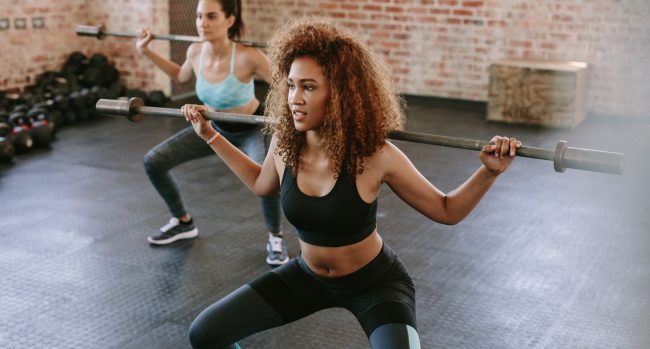When it comes to building your workout routine, there’s no question that one of the best power-building exercises is the squat. Even better, this exercise is also considered one of the top fat-burning exercises, as it boosts your metabolic rate, increases your heart rate and recruits some of the largest muscles in the body for a long-lasting calorie burn.
But that’s not all the multipurpose exercise has to offer. Once you know its commonly overlooked benefits, you won’t think twice about dropping it like a squat.
The benefits of squatting:
1. Mental Tenacity
Fact: squats are hard. So hard in fact that many people happily leave them out of their program, simply because they don’t want to put in the effort.
If you do however, you will be sweetly rewarded. Not only do squats build muscle in your legs, but they also help you strengthen your mental endurance. Push yourself through a grueling set of heavy squats, and you’ll soon find that other exercises feel much easier.
Squats teach you to push through the highest level of fatigue without giving up, which you can then apply to other moves in your workout program. Work up to your one-rep max, and you’ll find yourself lifting heavier weights for other muscle groups in no time!
2. Superior Core Strength
When you think of the main muscles worked during the squat, you’re probably thinking of your quads, hamstrings and glutes. But don’t forget about your core.
With every squat you perform, your core is contracting very intensely to support the weight. You’ll find that you can gain more core strength from a few sets of heavy squats than you can from other ab-focused exercises.
Maintaining a strong core is important for all-around fitness performance, as well as for reducing your risk of back pain over the long term. If you have a weak core, you’re inviting back problems, which may take you away from your workout plan for good.
Everyone should be taking steps to build a stronger core and back, because when this area of the body becomes injured, it can be a very long and slow road to recovery – if you ever recover.
3. Improved Flexibility
As you begin to train for squats, you’re going to have to start improving your flexibility through yoga, foam rolling, static stretches and proper warmup routines. Doing a full squat requires a certain level of mobility in the hips, along with flexibility in the ankles and calves.
With limited mobility in those areas, you simply will not perform the exercise correctly. The good news is that if you can’t do a full squat when you first start, don’t give up. The act of squatting on a weekly basis can help improve your mobility and flexibility. Soon enough, you’ll be able to easily perform a deep squat. And as flexibility improves, it will transfer over to exercises like lunges and deadlifts.
4. Enhanced CNS Activation
Finally, the squat will also train your body to improve its overall capacity for central nervous system (CNS) activation. Because the squat is such an intense movement that recruits so many muscle fibers, each rep you do requires a full-body focus. Your brain must learn how to activate almost every muscle fiber in your system and contract as hard as possible in order to lift up the weight.
It’s a much different experience than doing a leg extension or a bicep curl. The more adept you become at activating your CNS and all the target muscle fibers, the stronger you’ll become on other lifts, as well.
For instance, it wouldn’t be surprising to see your bench press increase after a good jump in your squat performance.
Don’t overlook the power of this exercise – both for your lower body as well as your overall performance. Squats are one of the best weight-lifting movements you could possibly do. If you aren’t taking the time to learn how to execute them properly and add them to your workout routine, now is definitely the time to start.

